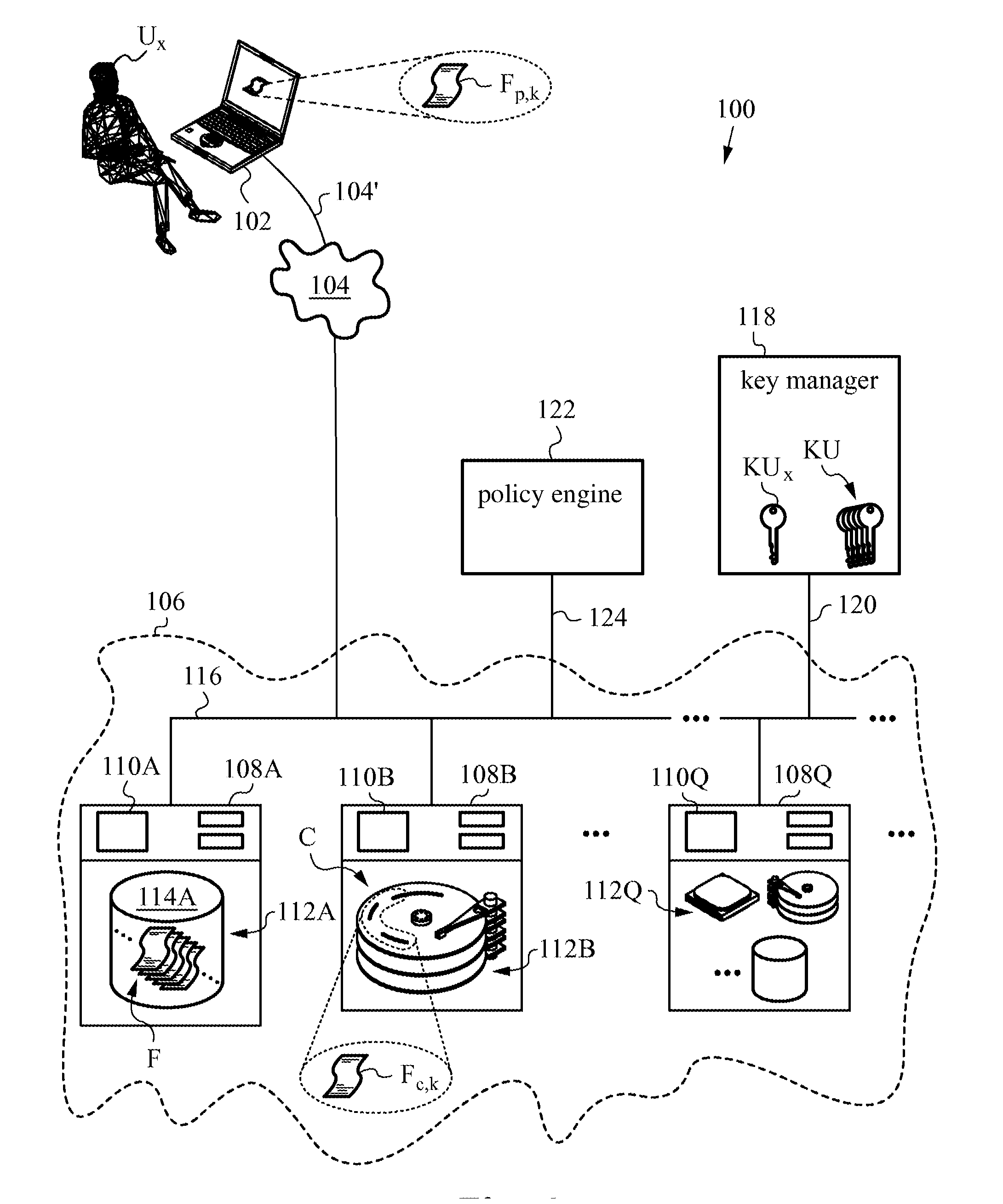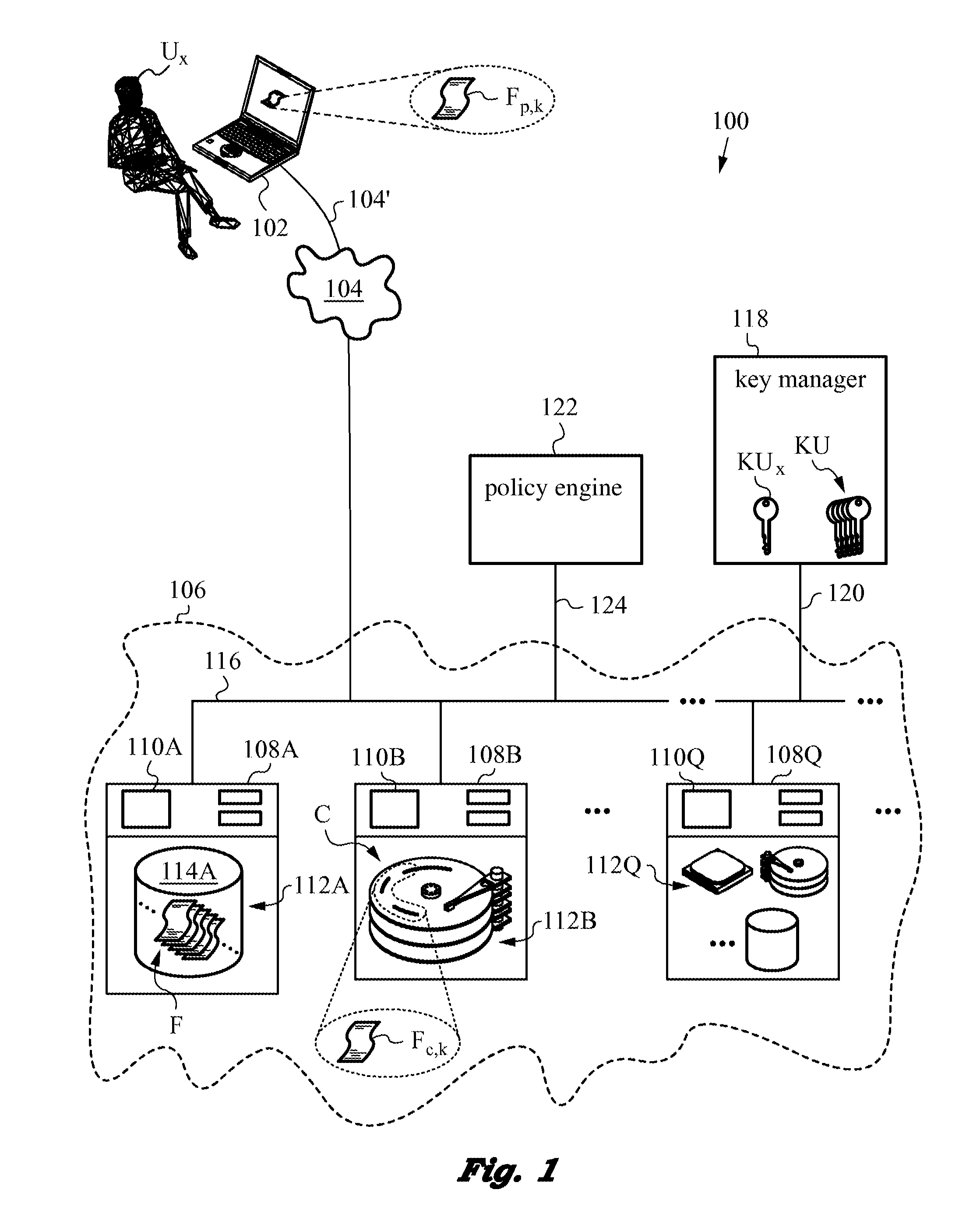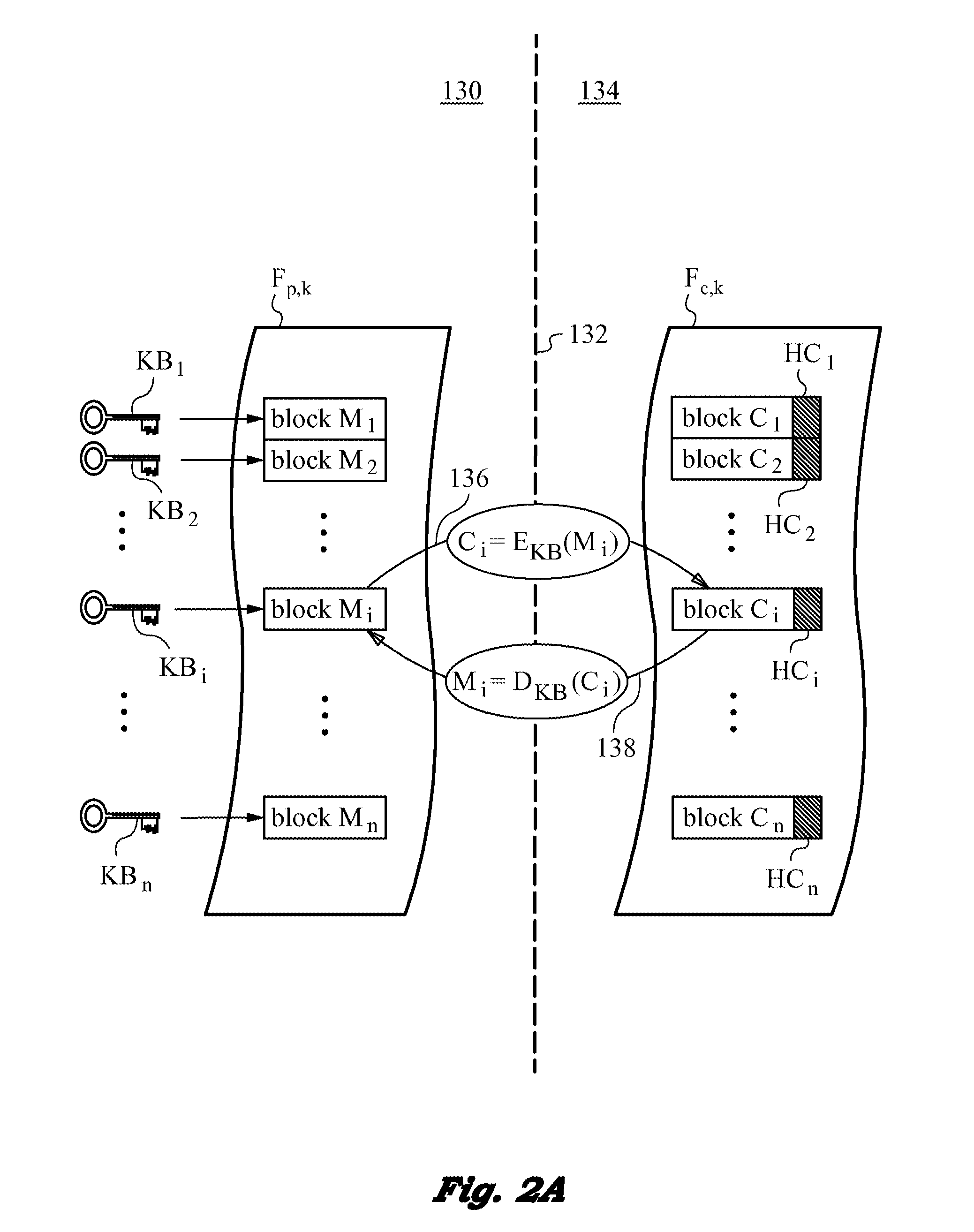Securing files under the semi-trusted user threat model using per-file key encryption
- Summary
- Abstract
- Description
- Claims
- Application Information
AI Technical Summary
Benefits of technology
Problems solved by technology
Method used
Image
Examples
embodiment 400
[0108]The per-file approach utilizes a unique file key to encrypt each plaintext file. To understand this approach let us first consider the embodiment 400 shown in FIG. 6 based on our semi-trusted client threat model. FIG. 6 is a variation of FIG. 1 of earlier embodiments with some important differences. Note that several reference numerals from FIG. 1 have been omitted for clarity and to avoid undue repetition but their presence and functions will be understood by those skilled in the art. Plaintext file Fp being accessed by an authenticable user Ux via network 104 using an untrusted client device 402, is assigned a file key FK with which it is encrypted and stored as encrypted ciphertext file Fc in secure distributed file system 406.
[0109]Further, each file key FK is wrapped / encrypted using a wrapping key WK. Wrapping key WK is stored in key manager 418. In the present embodiments, key manager 418 does not generate keys, but rather it only stores wrapping keys that are used to wr...
embodiment 700
[0155]As already explained, the administrator can define which parts of the file system to encrypt, and which keying policy to apply (unique wrapping key per file, per directory, per directory tree). The policy also defines the key rotation period for each section of the file system. Preferably, the policy engine, and the shim, is deployed on all or selected nodes of a Hadoop cluster. These nodes are preferably the data-nodes of Hadoop. Each client has a secure, authenticated connection to the policy engines. An exemplary topology representing the above described embodiment 700 is shown in FIG. 9.
embodiment 800
[0156]Preferably, the policy is cryptographically signed by a public / private key pair registered to the master policy server. FIG. 10 illustrates such an embodiment 800. The master policy engine, is deployed on the name-node (or simply name node) of Hadoop cluster, and it can push new policies to the policy engines / servers (on each data-node or simply data node), and / or they can request / pull the policy updates from the master policy engine. This ensures that the policy cannot be modified by an attacker and that all the policy engines / servers have the same policy. Since the policies are typically changed infrequently and are not bandwidth-intensive, the master policy engine is a relatively lean module without requiring a lot of bandwidth and horsepower, and can be conveniently deployed on the name-node of a Hadoop cluster.
[0157]In the embodiment shown in FIG. 10, the familiar cryptographic public / private key or digital signature security paradigm well understood in the art is employe...
PUM
 Login to View More
Login to View More Abstract
Description
Claims
Application Information
 Login to View More
Login to View More - R&D
- Intellectual Property
- Life Sciences
- Materials
- Tech Scout
- Unparalleled Data Quality
- Higher Quality Content
- 60% Fewer Hallucinations
Browse by: Latest US Patents, China's latest patents, Technical Efficacy Thesaurus, Application Domain, Technology Topic, Popular Technical Reports.
© 2025 PatSnap. All rights reserved.Legal|Privacy policy|Modern Slavery Act Transparency Statement|Sitemap|About US| Contact US: help@patsnap.com



